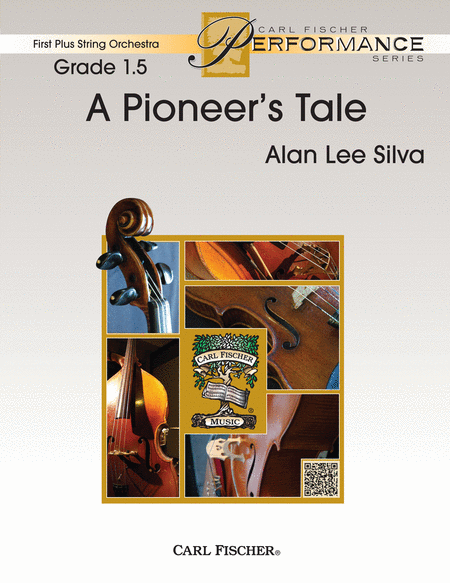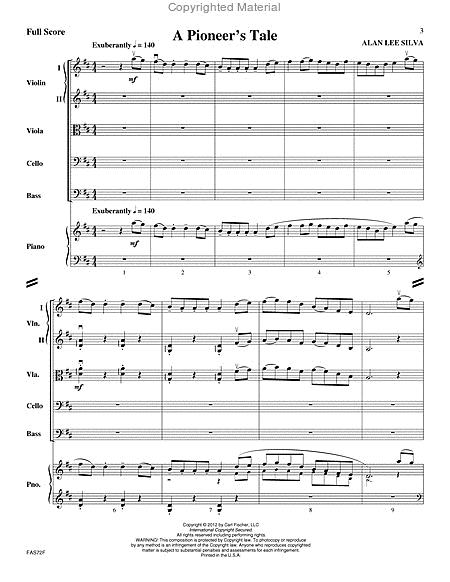A Pioneer's Tale
-
Ships in 1 to 2 weeks
Details
Description
SKU: CF.FAS72
Composed by Alan Lee Silva. SWS FS. First-Plus String Orchestra (FAS). Set of Score and Parts. With Standard notation. 12+16+16+4+10+10+10+3 pages. Carl Fischer Music #FAS72. Published by Carl Fischer Music (CF.FAS72).ISBN 9780825888939. UPC: 798408088934. 8.5 x 11 inches. Key: D major.
Using imagery and a musical language synonymous with the pioneering spirit the American 19th century, composer Alan Lee Silva has created another winning composition for developing string orchestras. His open, lush harmonies, singable melodies and lyrical sensibility make his compositions some of the most popular in world for school string ensembles. This piece may be one of his best!.
The Americana flavor of A Pioneer’s Tale captures the spirit of past adventures in U.S. history as explorers pushed out West to discover new frontiers. The piece follows an AABAC form. In the “A” section at m. 1, the folksong-type melody depicts a lone pioneer as he sets out on his journey that is underscored by the violins alone. Quickly joined by other adventurers, Violin 2 and Viola create a harmonic outline with open-string double-stops at m. 6. Building slowly to the 2nd “A” section at m. 10, the low strings enter with a solid root foundation as the full group grandly states the main theme. The Cello and Bass carry the melody at m. 26 as the high strings accompany above with pizzicato fifths.As the piece swells at m. 33 into the bridge at m. 34, the “C” section begins on the IV chord. The ensemble soars with energy as Violin I carries the tune over punctuated figures in the rest of the ensemble, depicting the new excitement in the West. A question and answer section begins at m. 42, starting with Violin I.The piece slows down at m. 54 to a fermata in m. 56 before the build to the end begins at the a tempo in m. 57. Quiet, pulsing staccatos create excitement and launch the full ensemble into the ending section at m. 61. A final vigorous and fiddlelike phrase in the high strings over punctuated open-string fifths in the low strings at m. 70 concludes the piece with intensity.


 Share
Share